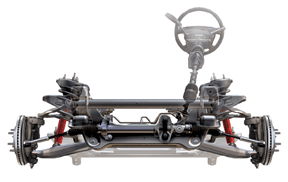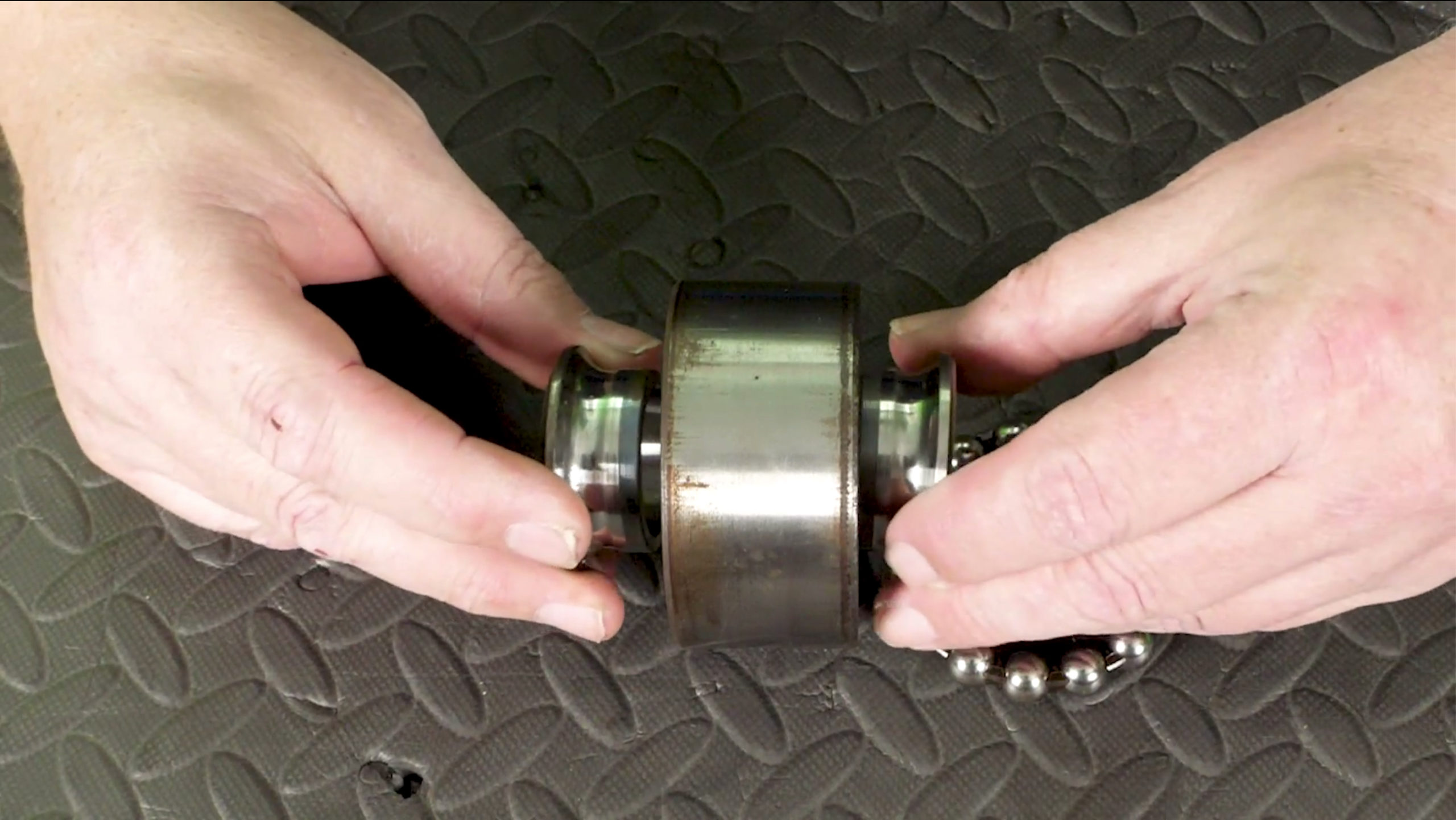Customers these days are pickier than ever about the work performed on their vehicles —and an alignment isn’t an exception. If customers aren’t satisfied with how their cars ride, steer and handle after driving them out of your shop, you’ll likely see those customers again — for the redo.
What follows are some simple steps for aligning vehicles to ensure that you do the job right the first time.
Tip No. 1: Don’t neglect the importance of the prealignment inspection.
The more thorough the prealignment inspection, the better your chances are of not overlooking something that might cause a comeback after the wheels have been aligned.
For starters, ride height should always be measured at all four corners of the vehicle, not just eyeballed. An inch or more of sag may not be apparent, but it can cause noticeable alignment problems.
If you find weak springs, recommend replacing them. Replacement is a better choice than shimming because it restores the feel of the original springs, as well as ride height.
Check the front and rear tires for signs of unusual wear. Camber wear on the front may indicate worn or damaged parts. Toe wear on the front can indicate worn or damaged parts, or it could be caused by misalignment in the rear. Rear toe or camber wear on cars with independent rear suspensions may also be a clue to worn or damaged parts.
Also, check and adjust the inflation pressure in each tire before doing the alignment. The amount of air in the tires affects ride height, so it needs to be right before proceeding with the job. A low tire can also cause a steering lead to one side, not to mention accelerated tire wear and overheating of the tire.
Another step that’s often overlooked or skipped is making sure all four tires are the same size and have the same basic tread pattern. A difference in tire sizes side to side or front to rear will alter ride height and alignment readings. A smaller tire at one location can also create a steering pull (usually toward the side with the smaller tire if the smaller tire is up front). A difference in tread widths and tread patterns (conventional tread versus all-season tread, for example) side to side may create a steering pull, too.
 Also inspect the wheels. Many vehicles have alloy wheels that may have cracks or other damage that would call for replacement. You should also spin each wheel by hand to check for brake drag. Finally, check the condition of all steering and suspension components for wear. In addition to inspecting the tie-rod ends, ball joints, control-arm bushings, shocks and struts (including the condition of the upper strut mounts).
Also inspect the wheels. Many vehicles have alloy wheels that may have cracks or other damage that would call for replacement. You should also spin each wheel by hand to check for brake drag. Finally, check the condition of all steering and suspension components for wear. In addition to inspecting the tie-rod ends, ball joints, control-arm bushings, shocks and struts (including the condition of the upper strut mounts).
Tip No. 2: Check the accuracy of your alignment equipment.
A simple but often overlooked cause of comebacks is alignment equipment that’s out of calibration. The cause may be something as simple as a rack that isn’t level or alignment heads that are out of adjustment — or something as serious as a mechanical or electronic glitch that produces inaccurate measurements. If you suspect a problem, contact your equipment representative for help. If you suspect your alignment equipment has seen better days, invest in new equipment.
Tip No. 3: Do a complete alignment.
Time is money, so the faster you get the job done the more money you make, right? Wrong. If you don’t do a good job because you’ve skipped things like checking toe-out on turns, ride height, SAI, caster (if nonadjustable), rear-wheel alignment (if nonadjustable), the condition of steering and suspension parts, etc., you may end up having to do the job over again.
Tip No. 4: Don’t try to align worn parts.
To hold an accurate alignment, steering and suspension parts must be in good condition, which means no more play than allowed by the vehicle manufacturer. Always refer to a reference manual for the exact specs since acceptable ball-joint play can vary considerably from one application to another.
As parts wear, they get progressively looser and are less able to maintain accurate wheel alignment. If a tie-rod end or ball joint is borderline, it’s better to replace it now.
Inspect the steering and suspension parts carefully, and replace any that are worn beyond normal acceptable service limits before the wheels are aligned. If the customer won’t OK the needed repairs, refuse the alignment job and send him someplace else.
Tip No. 5: Don’t just set the toe and let it go.
If a front-wheel-drive car has no factory adjustments for camber or caster (Honda, for example), don’t just set the toe and let it go — always read all the angles. Why? Because if there’s a problem, a simple toe adjustment won’t fix it.
Many so-called “nonadjustable” suspensions can often be easily adjusted with the help of various kinds of aftermarket alignment aids. If you’re not already familiar with the use of camber/caster shims, caster wedges, offset bushings and the like, get some catalogs from the specialty alignment-product suppliers and find out what’s available. Better yet, maintain an inventory of such products so you’ll have them when you need them.
Tip No. 6: Set to the factory-preferred specs, not rule-of-thumb specs.
There are no such things as “rule-of-thumb” specs when it comes to wheel alignment. What works on one vehicle may or may not work on another. Front-wheel-drive cars usually require different toe settings than rear-wheel-drive cars. Vehicle weight, chassis design, chassis loading, tire size, driveline configuration and intended use all affect wheel-alignment settings that the vehicle manufacturer develops for the vehicle.
Always use the “preferred” specs rather than the “acceptable range” because the former is tighter than the latter. If a spec allows up to plus or minus a degree of camber either way and the wheel is close to the acceptable limit, the overall difference in camber side to side may be too great.
Tip No. 7: Compensate for how the vehicle is driven and used.
Vehicle loading can have a very pronounced effect on wheel alignment. If a vehicle that’s normally loaded with passengers or cargo is aligned while empty, the tires will likely exhibit rapid wear because they won’t be running true when the vehicle is driven while carrying its normal operating load. Talk to the customer. If Dad car pools or Mom hauls the neighborhood kids on a regular basis, some extra weight should be added to the vehicle to simulate the extra load that’s usually carried.
Tip No. 8: Align all four wheels, not just the ones up front.
Four-wheel alignment has become much more commonplace in recent years, but there are still those who won’t align all four wheels because the customer doesn’t want to pay “extra” for a four-wheel alignment. This may be more of a marketing problem than a technical one, but the public needs to be educated that the rear wheels have just as much influence on where a vehicle goes as the ones up front. The emphasis should be on performing four-wheel alignments, not on the cheaper and easier two-wheel alignments.
On rear-wheel-drive cars and trucks that have no factory provisions for rear-wheel alignment, the temptation is to align the front wheels only and forget the rear. But if the axle is cocked and creates a thrust angle, the steering wheel will be off-center and the vehicle will lead to one side. The cure? Check the rear thrust angle and then align the front wheels to it. The vehicle will still dogtrack slightly, but at least it will steer straight.
On front-wheel-drive vehicles with or without adjustable rear suspensions, rear toe and camber should always be checked. Rear tire wear and rear-axle steer can cause major headaches with some of these vehicles, so checking all four wheels will rule out any problems that might be overlooked if only the front wheels are aligned.
Tip No. 9: Make sure the steering wheel is centered.
One of the leading causes of alignment comebacks is a steering wheel that’s off-center. Tire wear takes a while to catch up with a customer if the alignment isn’t on the mark, but an off-center steering wheel will be noticed immediately.
To avoid this kind of problem:
Make sure the steering wheel is centered before the wheels are aligned.
Align all four wheels to eliminate rear-axle steer and thrust angle (if possible). If not, then align the front wheels to the thrust angle.
Adjust both tie rods equally so toe is centered.
Test drive the vehicle before it’s returned to make sure the steering wheel is centered and the vehicle drives straight.
Never — I repeat — never remove and remount the steering wheel to cover up an off-center steering wheel. If the wheel isn’t centered, there’s a reason. Find it. Don’t camouflage it.
Tip No. 10: Test drive the vehicle before it’s returned to the customer.
A simple test drive can reveal a lot of problems that might have been otherwise overlooked. Sure, test drives take time, but so do comebacks. Think of it as a final quality-control check.












